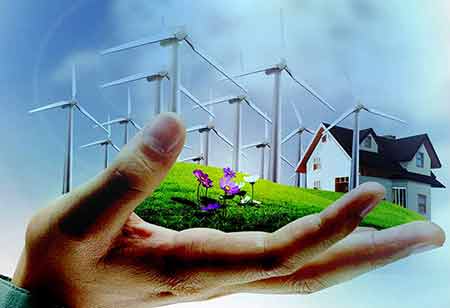Thank you for Subscribing to Energy Business Review Weekly Brief
Global Energy System Transformation Factors
For over a century, the power industry has been experiencing a rapid transformation, and this era of the fourth industrial uprising will be more exciting.

By
Energy Business Review | Thursday, June 09, 2022
Stay ahead of the industry with exclusive feature stories on the top companies, expert insights and the latest news delivered straight to your inbox. Subscribe today.
For over a century, the power industry has been experiencing a rapid transformation, and this era of the fourth industrial uprising will be more exciting. The conversion is faster than anticipated with diving prices for renewable energy and energy storage, carbon emission regulations, and the rise in distributed energy resources.
The decline of thermal power plants:
The most apparent reason for declining coal-fired power plants is low natural-gas prices and environmental activism. However, though there is a steady decline in consumption, coal is still anticipated to be a main fuel for electricity generation until 2030 and beyond.
The development of natural gas
The E-gas or CNG(Compressed Natural Gas) costs nearly 50% less when compared to petroleum products and also contributes to the prolonged life of the vehicle as it doesn’t contain lead or react to metals. In addition, CNG can be produced domestically, reducing transport costs, and is much more reliable when compared to petroleum as it can be made in abundance depending on the storage capacity.
The best option for power industries is investing in gas plants for a reliable capacity to meet the demands due to the retirement of coal generators; the only quick other alternative is natural gas. It also provides a relatively quick and cheap solution that meets carbon emission rules.
The Breeze of Wind Energy
Consumers opt for wind energy for its renewability, zero emissions, and affordability. In addition, there have been major technological breakthroughs like rise tower height, higher power capacity, and advances in aerodynamics that have bettered the overall performance and reliability by eradicating technical challenges that impede the large-scale use of wind energy.
Solar Energy gets the sunshine.
Perovskite solar technology has developed the production of solar cells more effective and cost-effective. As a result, the solar power industry is witnessing massive investment due to the big decrease in the cost of solar modules, and as per market analytics, by 2050, solar technology might produce 20% of the entire world’s energy.
Energy storage:
Energy storage is crucial to balancing power supply and demand. Incorporating a storage system with a renewable energy source guarantees a smooth and steady power supply in every weather condition.
Batteries are the most available storage devices used in renewable energy systems. Their use is rising on both the residential and grid-wide scale as they are more viable and affordable. It is estimated that energy storage will be a core component of all new energy technologies in the future.






